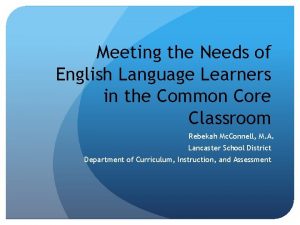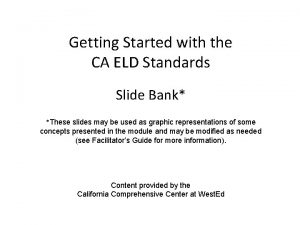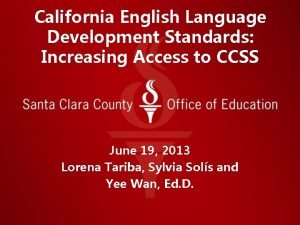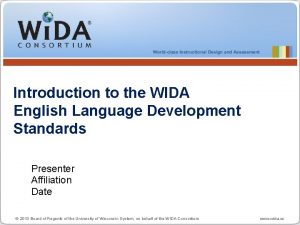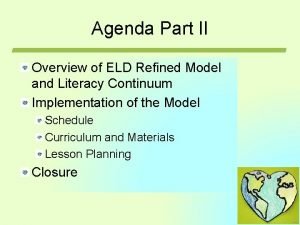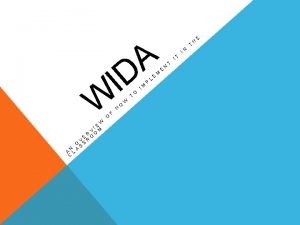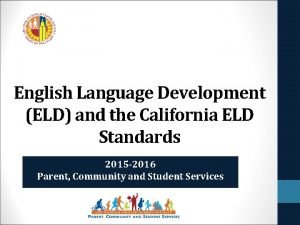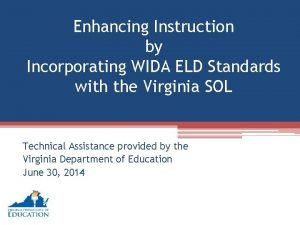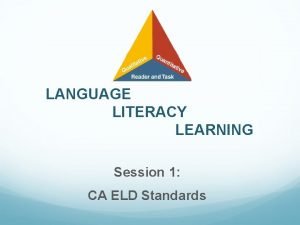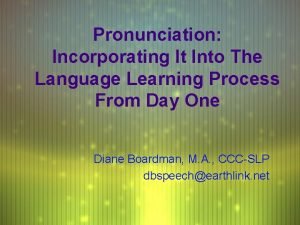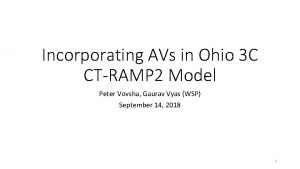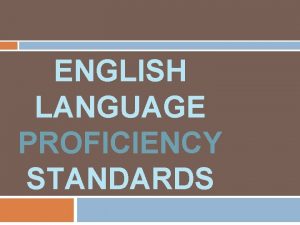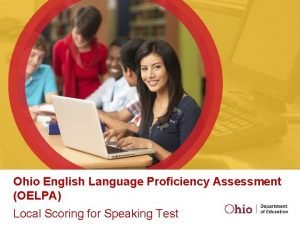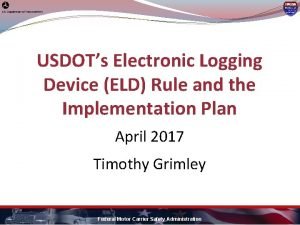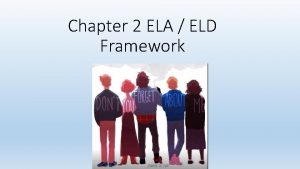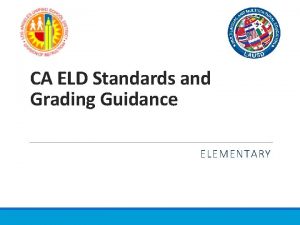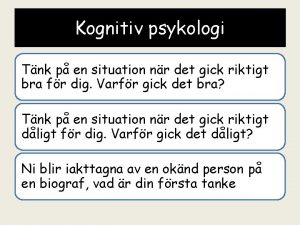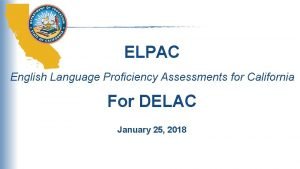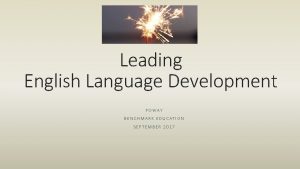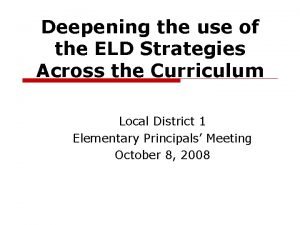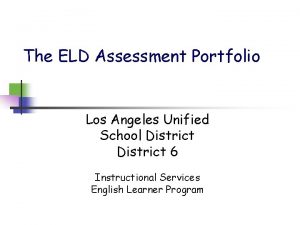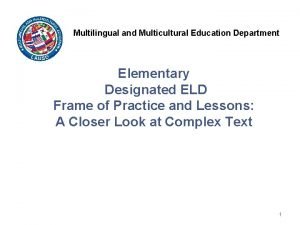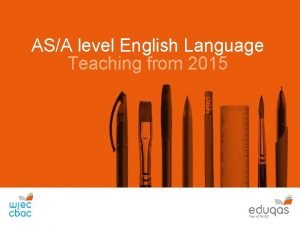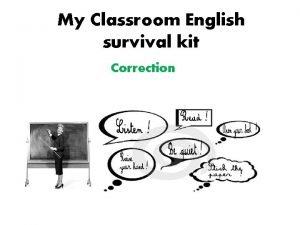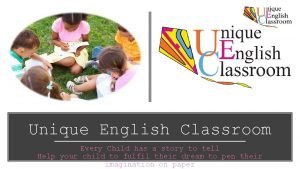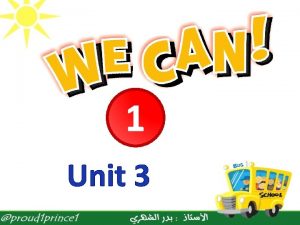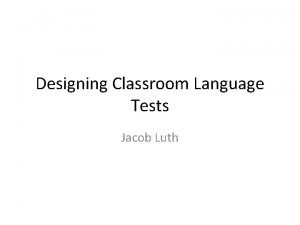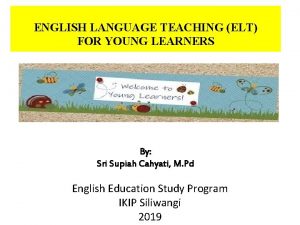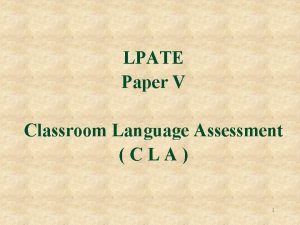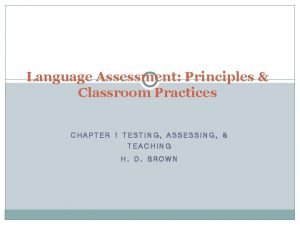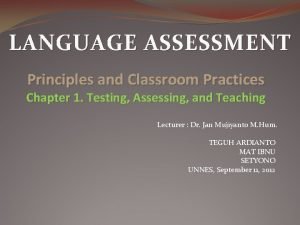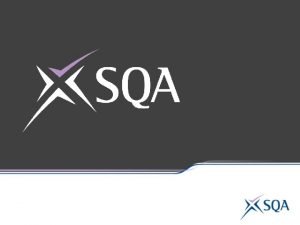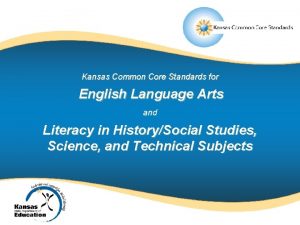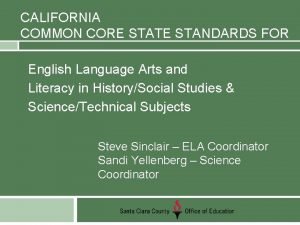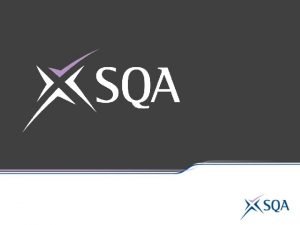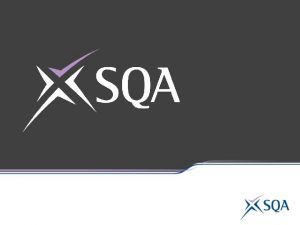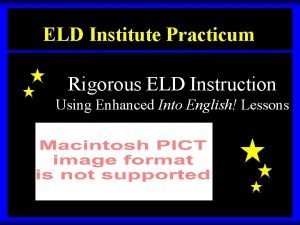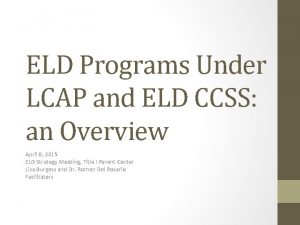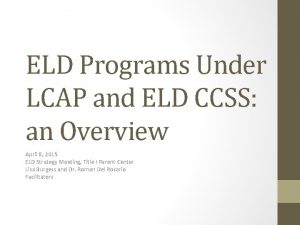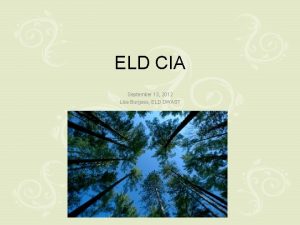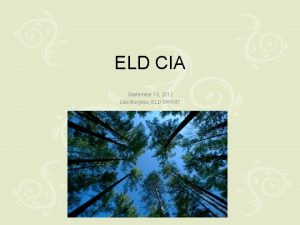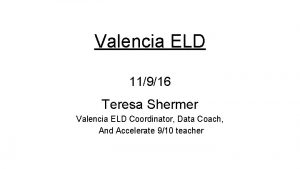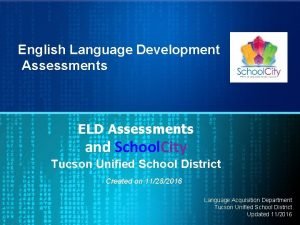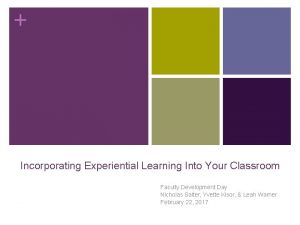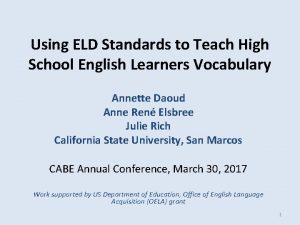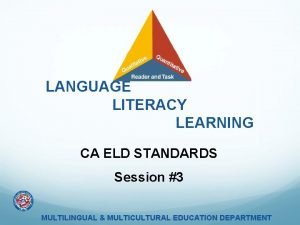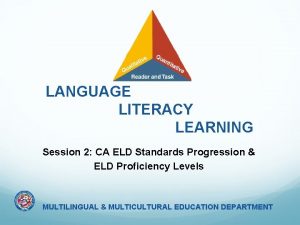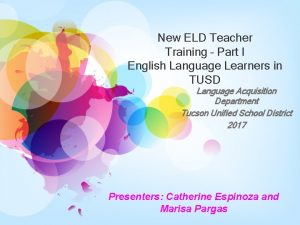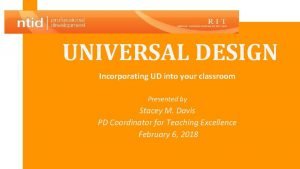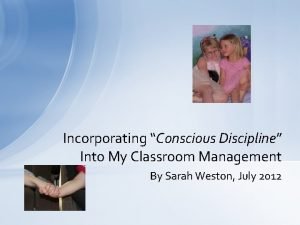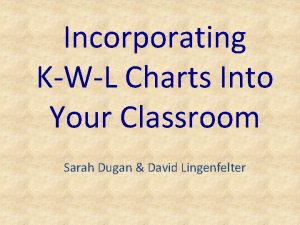Incorporating English Language Development ELD Standards into Classroom















































- Slides: 47

Incorporating English Language Development (ELD) Standards into Classroom Instruction 88 th Virginia Middle and High School Principals’ Conference and Exposition Hotel Roanoke & Conference Center June 28 -July 1, 2015

Today’s Highlights include… • English Language Learner (ELL) Demographics/Terminology • Suggestions for Incorporating English Language Development (ELD) Standards into Classroom Instruction

English Language Learner Demographics

ELLs: 8% of ALL Student Enrollment

ELL Growth in Virginia 120 000 100 000 80 000 60 000 40 000 20 000 0 1999 (31, 787) 2002 (49, 840) 2006 (78, 216) 2010 (90, 341) 2013 (93, 746) 2014 (97, 169)

Immigrant Children and Youth Enrollment 35 000 30 000 25 000 20 000 15 000 10 000 5 000 0 2006 (27, 150) 2008 (27, 261) 2010 (24, 352) 2013 (22, 847) 2014 (29, 336)

Division Name ELL Enrollment 1, 000 or More Fairfax County Prince William County Loudoun County Arlington County Alexandria City Chesterfield County Henrico County Manassas City Harrisonburg City Richmond City Newport News City Stafford County Manassas Park City Roanoke City 35, 035 13, 960 6, 519 4, 973 4, 019 3, 192 2, 813 2, 442 1, 807 1, 804 1, 183 1, 082 1, 048

Division Name ELL Enrollment 500 to 999 Spotsylvania County 965 Virginia Beach City 942 Albemarle County 924 Norfolk City 854 Winchester City 813 Chesapeake City 805 Accomack County 772 Rockingham County 702 Frederick County 561 Culpeper County 557 Fauquier County 525

Division ELL Enrollment 1 - 499 1 - 499 No ELLs Reported 99 Divisions 8 Divisions

d rg on ch m Ri , 17 (1 3) 7) , 7 2 (1 ) ) 17 , 3 (2 03 , 7 (2 ) 03 , 9 (2 ) 9) 43 , 2 (3 , 5 5 (4 ) 34 , 2 ) 61 0 3, (5 sa s bu on ris ar H ric o en an as M H ld ia fie st er Ch e an dr ex Al on lin gt (1 4) 05 6, (3 ou n ud Lo m ia W ill ax Fa irf Ar in ce Pr Largest ELL Student Enrollment (Top 10 Divisions) 40 000 35 000 30 000 25 000 20 000 15 000 10 000 5 000 0

ax k ac al G m am er st ill i W Ac co ce in Pr he in c W on irf ax Fa k ia dr gt lin Ar an ex Al ar rg bu Ci ty s. P sa as an M ris on ar H sa s as an M ) 8% (1 ) (1 8% ) 2% (2 ) 4% ) 6% (2 (2 ) 7% (2 ) 5% (3 1% ) (4 ) 1% (4 ) 2% (4 Largest Percentage of ELL Students (Compared to ALL Student Enrollment) Top 10 Divisions 45% 40% 35% 30% 25% 20% 15% 10% 5% 0%

Number of Languages Reported in Virginia Schools 223

g a) s) hi lli pi ne (P ric Af i( si Fa r se Ch in e ) ia an re Ko th io p (E Tw ric ha lo ga Ta Am u rd U e ic es m na Vi et ab Ar h is an Sp Top Ten Languages 70 000 60 000 50 000 40 000 30 000 20 000 10 000 0

Terminology

Acronym Clarification • The student ▫ ▫ LEP: Limited English Proficient ELL: English Language Learner EL: English Learner FLEP: Formerly LEP • The teacher/program ▫ ▫ ESL: English as a Second Language ESOL: English for Speakers of Other Languages ELD: English Language Development LIEP: Language Instructional Education Program

Know your ELL students…

ELLs may be… • • • LT-ELLs: Long Term ELLs R-ELLs: Reclassified ELLs M-ELLs: Migrant ELLs SLIFE: Students with Limited or Interrupted Formal Education SE-ELLs: Special Education ELLs Newcomers: Refugees, Immigrants HSN: Highly Schooled Newcomers Struggling Readers Gifted and Talented Homeless

Incorporating English Language Development (ELD) Standards into Classroom Instruction

ESEA Requirement Section 3113(b)(2) of the Elementary and Secondary Education Act of 1965 (ESEA), as amended by the No Child Left Behind Act of 2001 (NCLB), requires state agencies to establish standards and objectives for raising the level of English proficiency in the four recognized domains of speaking, listening, reading, and writing, and that are aligned with challenging state academic standards.

WIDA Consortium Member States Servicing over 1. 2 Million ELLs Virginia represents over 97, 000 ELLs, 4 th largest member state in the WIDA consortium

Mission To advance academic language development and academic achievement for linguistically diverse students through high quality standards, assessments, research, and professional development for educators

ELD Standards Social & Instructional Language of Language Arts Language of Mathematics Language of Science Language of Social Studies Academic Language Standard 1 Standard 2 Standard 3 Standard 4 Standard 5

Language Domains Listening Process, understand, interpret and evaluate spoken language in a variety of situations Speaking Engage in oral communication in a variety of situations for a variety of purposes and audiences Reading Process, understand, interpret and evaluate written language, symbols and text with understanding and fluency Writing Engage in written communication in a variety of situations for a variety of purposes and audiences

Levels of English Language Proficiency • Instructional Levels: 1 -5 • Monitoring Level: 6 (for two years after meeting exit criteria) 5 4 3 2 1 ENTERING EMERGING DEVELOPING EXPANDING BRIDGING 6 R E A C H I N G

Follow the course…

Step 1: Make the Connection Language Proficiency Language Academic Language ELD Standards of Learning Standards Academic Achievement Assessment Content Curriculum & Instruction

C Step 2: Understand Core Instruction, Core Language Instruction, and Supplemental Support Supplemental Title III Services Supplemental Title I Services Core Language (Lau) (ELD Standards) Core (SOL)

Essential Strategies for Core Classroom Teachers ▫ Training on modifying lessons to incorporate the ELD Standards ▫ Training on academic language strategies ▫ Cultural considerations for English Language Learners www. wida. us

Language Instruction Educational Programs (LIEP) for Core Language Acquisition ▫ Pull-out ESL Model ▫ Structured English Immersion Model ▫ Sheltered English Instruction Model Note: Collaboration between ESL and mainstream teachers is necessary. www 2. ed. gov/. . . /title-iii/language-instruction-ed-programs-report. pdf

Cultural Resources Culture Grams is an interactive Web site with information about over 200 countries of the world: http: //online. culturegrams. com The World Factbook provides information on the history, people, government, economy, geography, communications, transportation, military, and transnational issues for 267 world entities: https: //www. cia. gov/library/publications/the-world-factbook/ Ethnologue: Languages of the World is a searchable database of language resources: www. ethnologue. com Cultural Portraits provides a framework for developing cultural proficiency: www. BBCultures. com

Developing a Cadre of ESL certified teachers ▫ Recruiting certified ESL teachers ▫ Grooming existing staff to receive ESL certification ▫ Providing online courses to support certification efforts ESL Teacher Endorsement Requirements Institutes of Higher Education (IHEs) with Pre-K ESL Endorsement Offering

Step 3: Incorporate ELD Standards Into Classroom Instruction • Lesson Plans • Pacing Guides • Curriculum Maps • Curriculum Frameworks • Instructional Strands

Sample Science Lesson Plan SOL 4. 4 The student will investigate and understand basic plant anatomy and life processes. Key concepts include the structures of typical plants and the function off each structure; processes and structures involved with plant reproduction; photosynthesis; and adaptations allow plants to satisfy life needs and respond to the environment. WIDA Standard 4: The language of science Linguistic Complexity (discourse level) What part of the plant ________? The _____ part of the plant does ________. How are plants pollinated? Plants are pollinated _______. Language Forms and Conventions (sentence level) Pollinate-pollinated Reproduce-reproducing Vocabulary Usage (word/phrase level) root, stem, leaves, flower, transport, photosynthesis, environment Differentiated Practice (Remediation): Provide the student with a flower drawn by the teacher. Have the students label it and write the function of each flower part using a word bank (created by the teacher). Finally, have the students color in the flower. Differentiated Practice (Enrichment): Have the students create their own model of a flower using modeling clay. The students can then create an index card booklet to list the parts of the flower and explain each part’s function.

Sample English Pacing Guide 3 rd Nine Weeks 4 th Nine Weeks Continue to review and expand skills from previous nine weeks and add: SOL Usage/mechanics/grammar: Select items for review based on student needs Composing/Written Expression: Self-select narrative or expository topic for independent writing Compose persuasive papers incorporating shared writing on student and teacher selected topics Apply knowledge of writing domains Connect writing mode with the appropriate pattern of organization Edit for fragments and run-ons Use hyphens to divide words at the end of a line 5. 8 SOL Writing: Usage/mechanics/grammar: Use adverbs instead of adjectives where appropriate Use conjunctions Composing/Written Expression: Research Formulate questions about a topic Identify key terms to use in searching for information Identify, locate, explore and effectively use a variety of resources Skim and select information Combine related information from two or more sources Use facts and details in sentences to elaborate the topic Use specific vocabulary, words and phrases Develop notes Give credit to sources used in research 5. 8 5. 7 WIDA English Language Development Standards To be incorporated within the daily delivery of instruction for ELL students. Standard Abbreviation English Language Proficiency Standard 1 English language learners communicate for Social and Instructional purposes within the school setting Social and Instructional language English Language Proficiency Standard 2 English language learners communicate information, ideas and concepts necessary for academic success in the content area of Language Arts. The language of Language Arts 5. 7

Sample Curriculum Map SOL Standard of Learning Time Curriculum Framework Essential Knowledge Essential Vocabulary Teacher Resources & Enhanced Scope and Sequence Lessons (ESS) WIDA English Language Development Standards 1. 11 *not tested until 3 rd 9 weeks Measurement Calendar Language 9/3 – 9/6 4 days (ongoing) p. 18 month; today; yesterday; next week; last week; calendar Connections Standard 1: Social and Instructional Language *Use calendar language appropriately (e. g. , names of the months, today, yesterday, next week, last week). 1. 14 *not tested until 3 rd 9 weeks Probability & Statistics Data Collection/Graphs *Investigate, identify, and describe various forms of data collection (e. g. , recording daily temperature, lunch count, attendance, favorite ice cream), using tables, picture graphs, and object graphs Standard 2: Language of Language Arts Standard 3: Language of Mathematics – p. 25 data; count (ing); tally (ing); picture graph; object graph Data in our World Domains include: Listening, Speaking, Reading, Writing

Sample Curriculum Framework Standard 11. 2 Strand: Communication: Speaking, Listening, Media Literacy 11. 2 The student will examine how values and points of view are included or excluded and how media influences beliefs and behaviors. a) Use technology and other information tools to organize and display knowledge in ways others can view, use, and assess. b) Use media, visual literacy, and technology skills to create products. c) Evaluate sources including advertisements, editorials, blogs, Web sites, and other media for relationships between intent, factual content, and opinion. d) Determine the author’s purpose and intended effect on the audience for media messages. • UNDERSTANDING THE STANDARD (Teacher Notes) Students will continue to develop media literacy by examining how media messages influence people’s beliefs and behaviors. ESSENTIAL UNDERSTANDINGS All students should • recognize that media messages express viewpoints and contain values to influence the beliefs and behaviors of the intended audience. ESSENTIAL KNOWLEDGE, SKILLS, AND PROCESSES To be successful with this standard, students are expected to • organize knowledge and display learning using visual images, text, graphics, and/or music to create media messages with visual, audio, and graphic effects. ELD Standard 1: Social and Instructional Language ELD Standard 2: The Language of Language Arts Example Context for Language Use: Students listen to sample advertisements (video, radio, etc. ) to assess the use of persuasive techniques in the media. COGNITIVE FUNCTION: ANALYZE LANGUAGE DOMAIN: LISTENING Level 1 Entering Listen to and match media samples to specific purposes using visuals and a bilingual dictionary and working with a partner Level 2 Emerging Listen to and label media samples with a specific purpose using a word bank and bilingual dictionary and working with a partner Level 3 Developing Listen to and categorize media samples by specific purpose working with a partner Level 4 Expanding Listen to, identify, and discuss how characteristics of media samples relate to a specific purpose working with a partner Level 5 Bridging Listen to and compare and contrast by purpose the characteristics of media samples working with a partner Level 6 -Reaching TOPIC-RELATED LANGUAGE: Students at all levels of English language proficiency interact with grade-level words and expressions, such as: values, point of view, influence, belief, behavior, evaluate, advertisement, blog, editorial, intent, content, opinion, purpose, effect, audience, objectivity, subjectivity, bias, media, connotation, symbol, metaphor, imagery, visual, audio, graphic, audience, context, word choice, impact, public opinion, analyze, critique, persuade, entertain, appeal, ethics, and belief

Sample English Instructional Strand SOL 11. 2 The student will examine how values and points of view are included or excluded and how media influences beliefs and behaviors. ELD Standard 1: Social and Instructional language ELD Standard 2: The language of Language Arts Level 1 Entering Listen to and match media samples to specific purposes using visuals and a bilingual dictionary and working with a partner Level 2 Emerging Listen to and label media samples with a specific purpose using a word bank and bilingual dictionary and working with a partner Level 3 Developing Listen to and categorize media samples by specific purpose working with a partner Level 4 Expanding Listen to, identify, and discuss how characteristics of media samples relate to a specific purpose working with a partner Level 5 Bridging Listen to and compare and contrast by purpose the characteristics of media samples working with a partner Language develops across different levels of language proficiency.

Sample Mathematics Instructional Strand SOL. 5. 12 The student will classify a) angles as right, acute, obtuse, or straight; and b) triangles as right, acute, obtuse, equilateral, scalene, or isosceles. ELD Standard 1: Social and Instructional Language ELD Standard 2: The language of Language Arts ELD Standard 3: The language of Mathematics Level 1 Entering Level 2 Emerging Level 3 Developing Level 4 Expanding Ask and answer yes/no questions related to types of angles using teacher oral scaffolding and visual supports Ask and answer simple questions related to types of angles using sentence frames and visual supports Describe the relationship between types of angles using a word bank and visual support Describe the relationships among multiple angles using visual support Level 5 Bridging Explain how to classify angles with and without visual support Language develops across different levels of language proficiency.

Sample Science Instructional Strand SOL 4. 1 The student will demonstrate an understanding of scientific reasoning, logic, and the nature of science by planning and conducting investigations ELD Standard 1: Social and Instructional ELD Standard 2: The language of Language Arts ELD Standard 4: The language of Science Level 1 Entering State reasons for outcomes of experiments on electricity using illustrations or realia and teacher guidance (i. e. “electricity goes, “electricity stops” when circuit is opened or closed Level 2 Emerging State reason for outcomes for experiments on electricity using illustrations or realia, oral sentence starters, and teacher guidance (i. e. “the bulb turned on because…”, “the balloons attracted/repelled because…”) Level 3 Developing Explain outcomes of experiments of electricity using illustrations and oral sentence frames Level 4 Expanding Explain in detail outcomes of experiments on electricity using illustrations and with word/phrase banks Level 5 Bridging Explain in detail outcomes of experiments on electricity using illustrations or realia Language develops across different levels of language proficiency.

Sample History/Social Science Instructional Strand SOL 1. 6 The student will describe how the location of his/her community, climate, and physical surroundings affect the way people live, including their food, clothing, shelter, transportation, and recreation. ELD Standard 1: Social and Instructional ELD Standard 2: The language of Language Arts ELD Standard 5: The language of History/Social Science Level 1 Entering Name weather conditions and their effects on people using calendars, maps, charts, and graphs Level 2 Emerging Restate weather conditions and their effects on people using calendars, maps, charts, and graphs Level 3 Developing Describe weather conditions and their effects on people using calendars, maps, charts, and graphs Level 4 Expanding Discuss weather conditions and their effects on people using calendars, maps, charts, and graphs Level 5 Bridging Explain weather conditions and their effects on people using calendars, maps, charts, and graphs Language develops across different levels of language proficiency.

Building Bridges Collaboration Professional Development Mainstream ESL Core (SOL) and Core Language (ELD Standards) Classrooms Core (SOL) and Core Language (ELD Standards)

How can support be provided to balance the instructional scale? Standards of Learning ELD Standards SUCCESS on SOL Assessments and ACCESS for ELLs®

So that ALL students including ELLs are…

Statewide Title III AMAO Results Assessment State Target for 2013 -2014 Assessments State Result for 2014 -2015 Accountability Year Met Target? AMAO 1 (Progress) ACCESS for ELLs® 68% 80% Yes AMAO 2 (Proficiency) ACCESS for ELLs® 19% Yes AMAO 3 (AMO Reading) Standards of Learning 52% 54% Yes AMAO 3 (AMO Mathematics) Standards of Learning 53% 62% Yes AMAO 3 (Federal Graduation Indicator added for the 2013 -2014 school year) Standards of Learning (standard or advanced diplomas) 80% 68% No Objective

Virginia Department of Education 2015 Professional Development Support • Introduction to the ELD Standards (Day 1) Dynamic Differentiation for Linguistically Diverse Students (Day 2) • Expediting Comprehension for English Language Learners (Ex. C-ELL )101 • Ex. C-ELL for Instructional Leaders • Accommodations for Limited English Proficient Students • ACCESS 2. 0 • Parents as Educational Partners (PEP)

Time to share… 1. How does your school division ensure the core programs and services include core language programs and services for ELLs? 2. What type of Title III supplemental support does your school division provide?

Virginia Department of Education Title III Contacts Veronica Tate Director Program Administration and Accountability Veronica. Tate@doe. virginia. gov (804) 225 -2870 Judy Radford ESL Professional Development Coordinator Judy. Radford@doe. virginia. gov (804) 786 -1692
 Integrated eld vs designated eld
Integrated eld vs designated eld How to write california eld standards
How to write california eld standards Ca eld standards
Ca eld standards Wida language objectives examples
Wida language objectives examples Eld standards az
Eld standards az Wida eld standards
Wida eld standards Eld emerging expanding bridging
Eld emerging expanding bridging Wida eld standards
Wida eld standards Eld standards lausd
Eld standards lausd Incorporating the change
Incorporating the change Picking up and incorporating dna from dead bacterial cells
Picking up and incorporating dna from dead bacterial cells Nested quotations
Nested quotations Incorporating pronunciation
Incorporating pronunciation Incorporating in ohio
Incorporating in ohio Capital budgeting chapter
Capital budgeting chapter Btech smart classes
Btech smart classes Language proficiency levels
Language proficiency levels Texas english language proficiency standards
Texas english language proficiency standards Oelpa scoring guide
Oelpa scoring guide Eld rule summary
Eld rule summary Ela eld framework
Ela eld framework Eld levels
Eld levels Telematics api
Telematics api Psykologisk konservatism
Psykologisk konservatism Elpac.ort
Elpac.ort Benchmark eld curriculum
Benchmark eld curriculum Eld strategies
Eld strategies Eld los angeles
Eld los angeles Local guide program
Local guide program Designated eld lesson plans
Designated eld lesson plans Factors determining service standards
Factors determining service standards Levels of language knowledge
Levels of language knowledge English survival kit pdf
English survival kit pdf Unique english classroom
Unique english classroom Classroom english flashcards
Classroom english flashcards Classroom management plan example
Classroom management plan example Designing classroom language test
Designing classroom language test Classroom language for teachers
Classroom language for teachers Classroom language assessment
Classroom language assessment Language assessment principles and classroom practices
Language assessment principles and classroom practices Background of direct method
Background of direct method What is summative evaluation
What is summative evaluation Sqa higher english understanding standards
Sqa higher english understanding standards Kansas state standards ela
Kansas state standards ela California content standards english
California content standards english California state standards english
California state standards english Ah geography understanding standards
Ah geography understanding standards Understanding standards advanced higher art
Understanding standards advanced higher art
